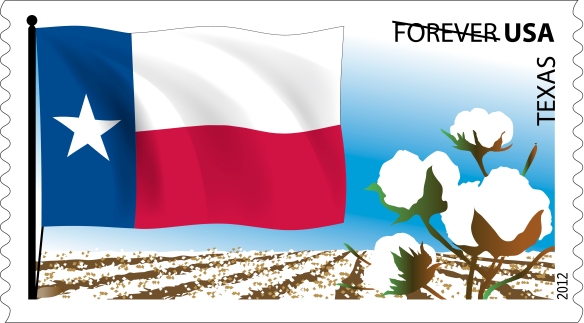On August 16, the U.S. Postal Service will complete the Flags of Our Nation series with the issuance of the sixth and final set of ten stamp designs. All month long we’ll be taking a look at each of the stamps in the last set. First up: Texas!
 The Lone Star State—the second largest state in the Union—is a land so vast and wide it stretches more than 700 miles from east to west and nearly a thousand miles from north to south. Its flag dates from 1839, when it was approved as the national flag of the Republic of Texas.
The Lone Star State—the second largest state in the Union—is a land so vast and wide it stretches more than 700 miles from east to west and nearly a thousand miles from north to south. Its flag dates from 1839, when it was approved as the national flag of the Republic of Texas.
Separated by war from Mexico on March 2, 1836, the independent republic struggled with wars, raids, and financial problems. In September of that year, Texans opted for annexation by the United States, but Texas didn’t become the nation’s 28th state until December 29, 1845.
Texas withdrew from the Union on February 1, 1861, and joined the Confederacy. The state saw little fighting during the Civil War, although notable battles include the capture and recapture of the port city of Galveston. The final battle on Texas soil occurred at Palmito Ranch near Brownsville after General Robert E. Lee’s surrender at Appomattox. Texas was readmitted to the Union on March 30, 1870.
The stamp’s “snapshot art” depicts a field of cotton, a major cash crop grown on millions of acres in the state.
